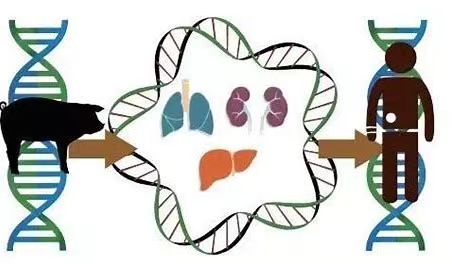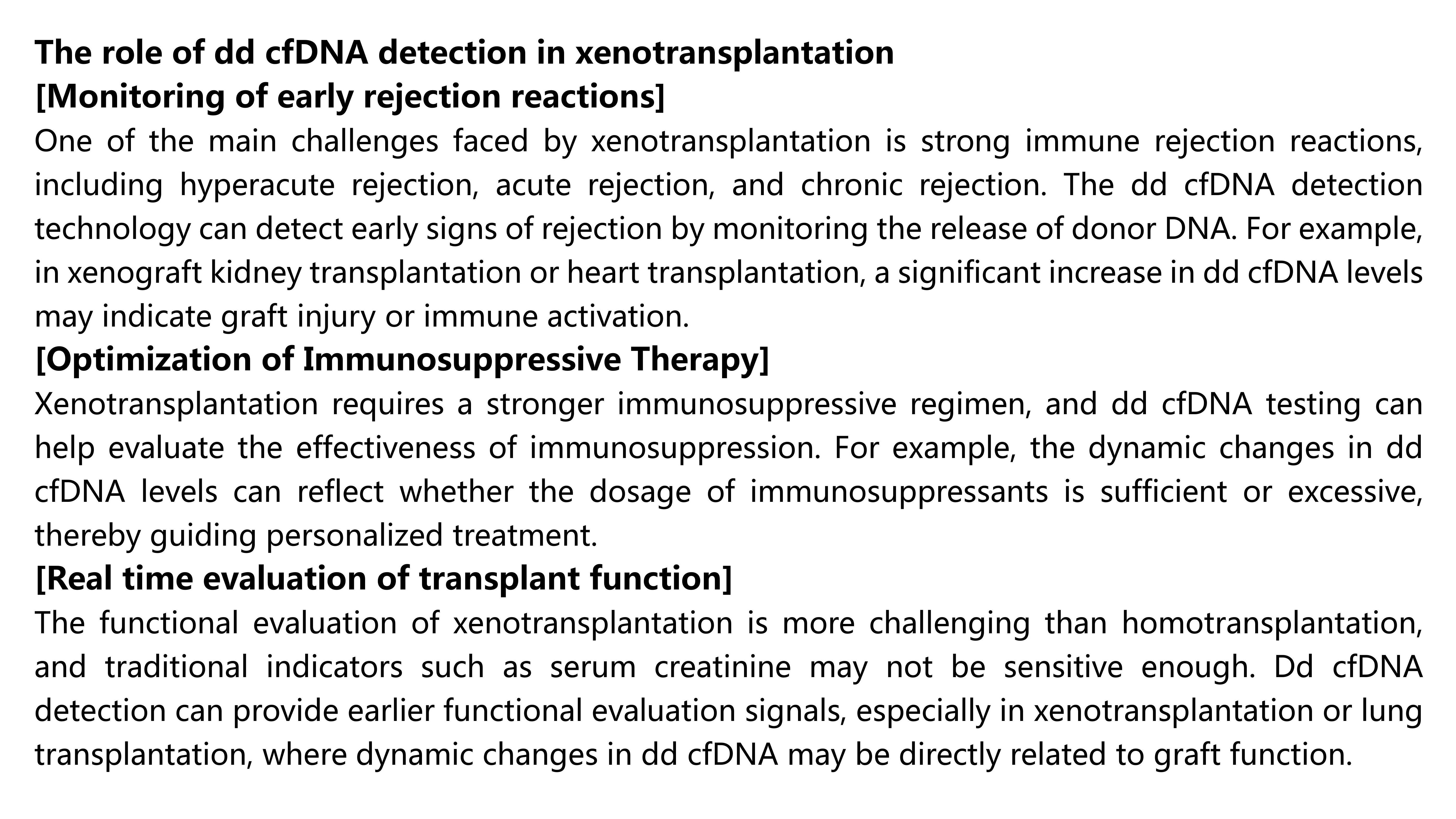Heterogeneous organ transplantation is the surgical transfer of organs or tissues from an individual of one species to a certain part of an individual of another species. Scientists have cultivated new organs on animal bodies. These organs are covered in the human stem cell cultivation environment. The new organs developed can be accepted by the human body. As long as the human body accepts these "xenogeneic organ transplants" and does not cause tragic immune system reactions, this will form a de facto continuous source of human transplanted organs, thus effectively solving the current situation of serious shortage of human transplanted organs. But at the same time, when organs cultured from xenogeneic organ transplantation are transplanted into humans, there will be problems such as hidden dangers of cross-species virus infection. dd-cfDNA detection technology uses methods such as high-throughput sequencing (NGS) to distinguish between DNA sequence differences (such as SNP/Indel sites) between donors and recipients, thereby quantitatively analyzing the proportion of free DNA derived from donors. This technology can reflect graft damage or rejection in real time and is characterized by non-invasive, high sensitivity and rapid response. In xenotransplantation, gene sequences are more diverse due to species differences between donors and recipients, which provides a more significant signal differentiation advantage for dd-cfDNA detection.


